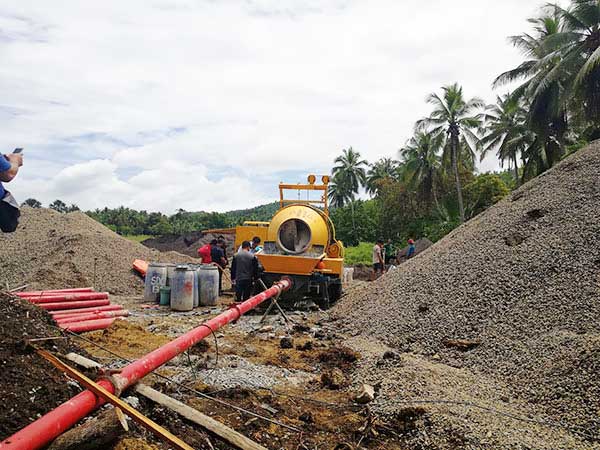Concrete is a mixture of aggregates, cement, and water that is fairly liquid when it is first mixed and solidifies and sets later to form the strong material that is used extensively in construction. The fact that it is liquid in its initial stages has led to its transfer being adapted to pumping like other liquids.
concrete pump how it works?
Twin-cylinder concrete pumps were first invented in 1957, and this design principle still holds good for most standard concrete pump designs. The liquid concrete from the mixing plant used for producing concrete is led into a hopper that is part of the concrete pump. This can be done through skips, transit mixers, or other arrangements. One piston in one cylinder draws the concrete into it from the hopper, while the second cylinder-piston pushes it into the discharge pipes. A valve that is designed to judge which cylinder is open to the hopper or the discharge pipes switches over each time the piston reaches the endpoint. So, while one cylinder discharges the concrete the second one draws fresh concrete from the hopper. The supply of concrete is steady through the discharge pipes that are led to the point where the concrete needs to be placed.
Discharge pipes attached to concrete pumps are metal pipes of short lengths that can be easily linked with quick-release clamps that allow the pipe length to be extended or shortened as required. At the final point of the discharge pipes, there will normally be a rubber hose that can be easily be manipulated to place the concrete exactly where it is required. Some concrete pumps may have complete discharge pipes of a fixed length made of HDPE or other flexible material.

The use of concrete pumps has revolutionized the construction of high rise buildings. The previous method of construction required the use of cranes that lifted large skips into which concrete was obtained from mixers. This led to the supply of concrete being intermittent and mounds of concrete at the placement area that again had to be distributed. Concrete pumps, on the other hand, ensure a continuous supply of concrete to the exact spot where itis required, and this also prevents the formation of joints between slightly dry and otherwise wet concrete.
Concrete pumps allow much larger volumes of concrete to be placed and while cranes get limited to about 12m3 per hour, pumps can pump a volume of 50m3 every hour, with ease. The constant flow of concrete ensures that there is no wastage of manpower. Concrete gets placed exactly where it is required, and cranes can also be then available for other tasks. Most concrete pumps are mobile and can be set up in very little time once they arrive at a site.
Concrete pump operators must take care to clean out the pipes of any vestige of concrete once a job is completed. This is done by introducing cleaning rubber balls that have the same diameter as the discharge pipes and subjecting them to high water pressure. The pump is then ready to be moved to the next job.